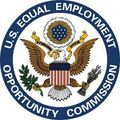 By Jude Biggs
By Jude Biggs
After Kansas State University denied her request to extend a leave of absence for longer than six months, assistant professor Grace Hwang, who suffers from cancer, filed suit against the University alleging disability discrimination and retaliation under the Rehabilitation Act. The Tenth Circuit Court of Appeals ruled that the University had not violated the Rehabilitation Act because Ms. Hwang could not show that she was able to perform the essential functions of her job. In addition, the Tenth Circuit held that requiring the University to extend the six-month’s leave was not a reasonable accommodation. Hwang v. Kansas State Univ., No. 13-2070 (10th Cir. May 29, 2014).
Policy Provided Six-Month’s Paid Leave of Absence
Ms. Hwang was set to teach classes at Kansas State University under a one-year contract that covered all three academic terms — fall, spring and summer. Before the fall term, Ms. Hwang was diagnosed with cancer. She asked for a leave of absence to seek medical treatment. The University granted her a paid six-month leave under its regular policy which capped the length of a leave at six months.
As the six-month leave was coming to an end, Ms. Hwang’s doctor advised her to seek more time off of work. She asked the University to extend her leave through the end of the spring semester, intending to return before the summer term. The University refused to extend her leave but instead arranged for Ms. Hwang to receive long-term disability benefits, effectively ending her employment with the University.
Ms. Hwang sued the University in federal court alleging that the University’s denial of her request for extended leave constituted disability discrimination under the Rehabilitation Act. The Rehabilitation Act prohibits disability discrimination by entities that receive federal funds, such as Kansas State. 29 U.S.C. § 794(a). The federal district court dismissed her lawsuit on a motion to dismiss (before any discovery was done), and Ms. Hwang appealed to the Tenth Circuit Court of Appeals, which covers the states of Colorado, Utah, Wyoming, Kansas, Oklahoma and New Mexico.
Extended Leave Not A Reasonable Accommodation Under Rehabilitation Act
The University did not dispute that Ms. Hwang was a capable teacher and that her cancer rendered her disabled as defined by the Rehabilitation Act. The central issue in the appeal was whether the University was required to ignore the six-month time limit in its leave policy to extend Ms. Hwang’s leave of absence beyond six months. The Court said no. Because Ms. Hwang wasn’t able to work for an extended period of time, she was not capable of performing the essential functions of her job. In addition, requiring the University to keep her job open for that extended period of time did not qualify as a reasonable accommodation. The Court wrote: “[a]fter all, reasonable accommodations – typically things like adding ramps or allowing more flexible working hours – are all about enabling employees to work, not to not work.”
The Court noted that a “brief absence from work” for medical care may be required as a reasonable accommodation, as it likely allows the employee to continue to perform the essential functions of the job. Determining how long employers must provide for leave as a reasonable accommodation depends on factors such as the duties essential to the job in question, the nature and length of the leave sought and the impact of the leave on co-workers. That said, the Court stated that it would be difficult to find a six-month leave of absence in which the employee performs no work (e.g., no part-time hours or work from home) reasonable in any job in the national economy today. Ms. Hwang’s terrible problem, in the Court’s view, was one other forms of social security aim to address. In addition, the Court noted that the aim of the Rehabilitation Act is to prevent employers from denying reasonable accommodations that would allow disabled employees to work, not to turn employers into a “safety net” for those who cannot work.
“Inflexible” Six-Month Leave Policy Not Inherently Discriminatory
Ms. Hwang asserted that the University’s “inflexible” sick leave policy that capped the maximum length of sick leave at six months violated the Act. She cited the EEOC’s guidance manual which states that if a disabled employee needs additional unpaid leave as a reasonable accommodation, the employer must modify its “no-fault” leave policy to provide the additional leave, unless the employer can show that there is another effective accommodation that would allow the individual to perform the essential functions of her job, or that granting additional leave would cause the employer an undue hardship. The Court, however, pointed to another section of the EEOC’s guidance manual to counter Ms. Hwang’s argument, as the EEOC manual states “ . . . six months is beyond a reasonable amount of time.” In fact, the Court stated that an “inflexible” leave policy can actually help protect the rights of disabled employees rather than discriminate against them because such a policy does not permit individual requests for leave to be singled out for discriminatory treatment.
Not all leave policies will past muster, however. The Court stated that policies that provide an unreasonably short sick leave period may not provide enough accommodation for a disabled employee who would be capable of performing his or her job with just a bit more time off. Alternatively, policies that are applied inconsistently, such as where some employees are allowed more time off and others are held to a strict time limit, could be discriminatory. In this case, however, the Court found that Ms. Hwang did not allege any facts to support a claim that she was treated differently than other similarly situated employees.
Retaliation Claim Fails As Well
Ms. Hwang also asserted that she was unlawfully retaliated against for reporting disability discrimination. In particular, she based her claims on two theories : (1) the University failed to explain her COBRA health benefits before or immediately after her termination; and (2) she wasn’t hired for two other positions at the University that she applied for after losing her teaching job. The Court easily dispensed with both theories.
First, COBRA allows thirty days for an employer to provide separating employees with a COBRA notice. Consequently, the University was not required to provide Ms. Hwang with notice of her COBRA benefits before or immediately after her termination of employment. Second, although Ms. Hwang alleged that she was not hired for two other University positions for which she applied, she failed to allege any facts suggesting that the University’s decision not to hire her was because she had engaged in legally protected opposition to discrimination. She not only failed to provide facts showing that she was qualified for the two jobs, but she also failed to offer facts suggesting that the University officials who decided not to hire her knew about her disability and her complaint about disability discrimination. Without such allegations, the Court ruled that Ms. Hwang’s retaliation claim failed.
ADA Application
Although this case alleged a violation of the Rehabilitation Act, courts typically analyze such claims similarly to those alleging a violation of the Americans With Disabilities Act (ADA). Consequently, this case may prove helpful to employers defending ADA claims where the employer denies an employee’s request for an extended leave of absence. Employers should heed the Court’s warning about leave policies that may be discriminatory if they provide an unreasonably short leave or are inconsistently applied. However, lengthy leaves of six months or more, or leaves of an unlimited duration in which the disabled employee provides no work, will likely not be considered a reasonable accommodation.
Click here to print/email/pdf this article.










